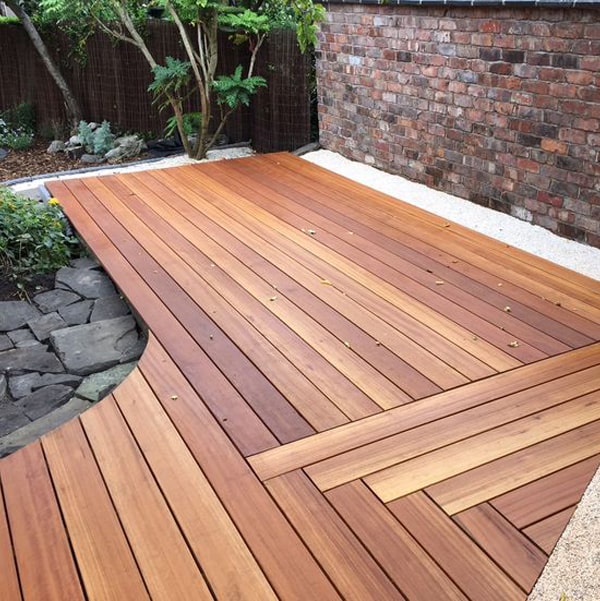Siberian Larch: A Timeless Timber for Modern Construction and Design
In the world of construction and architectural design, the choice of building materials plays a critical role in the durability, aesthetics, and sustainability of a structure. One material that has been gaining increasing popularity in recent years is Siberian larch. Known for its strength, natural beauty, and resistance to harsh environmental conditions, Siberian larch is widely used across Europe, North America, and Asia for everything from residential homes to commercial buildings.

If you're considering timber for cladding, decking, or any other outdoor application, Siberian larch offers a unique set of advantages that make it one of the most versatile and reliable woods available today.
What is Siberian Larch?
Siberian larch (Larix sibirica) is a species of deciduous conifer that grows in the frigid forests of Siberia and other parts of northern Russia. Because of the cold and short growing seasons, the trees grow slowly, resulting in a wood that is extremely dense and hard for a softwood. This natural density gives it a high level of durability and resistance, making it ideal for demanding exterior applications.
The tree is sustainably harvested from managed forests and is recognized not only for its performance but also for its low environmental impact, making it a preferred choice among eco-conscious builders and homeowners.
Characteristics of Siberian Larch
1. High Durability
One of the standout features of Siberian larch is its durability. With a density of approximately 590–650 kg/m³ and a high resin content, the wood is naturally resistant to rot, fungi, and insects. It performs exceptionally well in harsh climates — from hot summers to freezing winters — and can last decades without the need for chemical treatments.
In fact, Siberian larch is often used in areas with extreme weather conditions, such as coastal regions or alpine environments, due to its natural resilience.
2. Natural Aesthetic Appeal
Another reason why Siberian larch is so popular is its visual charm. The wood ranges in color from pale yellow to rich golden brown, with a fine grain and attractive texture. Over time, when exposed to the elements, it weathers to a silver-grey patina, giving buildings a modern yet rustic look.
This aging process is especially valued in architectural designs that aim to harmonize with the natural environment, making Siberian larch a preferred material in contemporary eco-builds and minimalist structures.
3. Low Maintenance
Siberian larch is one of the few timbers that require minimal maintenance. If left untreated, it will still maintain its structural integrity and beauty for years. For those who prefer to maintain the original golden hue, UV-protective oils or stains can be applied periodically. However, even without treatment, the wood’s natural oils and density help protect it from damage.
Common Uses of Siberian Larch
Thanks to its combination of strength, beauty, and sustainability, Siberian larch is used in a wide range of applications:
- Cladding
Exterior cladding is one of the most popular uses for Siberian larch. It not only enhances the building’s aesthetics but also adds a protective layer that helps with insulation and weather resistance. Whether installed horizontally, vertically, or in a more complex design, Siberian larch cladding brings a timeless and refined look to any structure.
- Decking
Siberian larch is an excellent choice for decking due to its toughness and resistance to moisture. It can handle high foot traffic and fluctuating weather conditions, making it a long-lasting material for patios, balconies, and outdoor walkways.
- Fencing and Landscaping
For outdoor fencing and landscaping features like pergolas, garden beds, or benches, Siberian larch provides a robust and natural solution. Its weather resistance means it performs well outdoors year-round without requiring constant upkeep.
- Interior Design
While most commonly used externally, Siberian larch also makes a beautiful addition to interior spaces. It’s used for wall panels, ceiling beams, and flooring, bringing warmth and texture to modern interiors.
Environmental and Economic Benefits
Siberian larch is not only a practical and beautiful material but also an environmentally responsible one. It is harvested from well-managed forests and is often available with certifications such as FSC (Forest Stewardship Council) or PEFC (Programme for the Endorsement of Forest Certification). These certifications guarantee that the wood is sourced ethically and sustainably.
Additionally, because Siberian larch is so durable, it doesn't need to be replaced as frequently as other materials, reducing waste and long-term costs. It’s also a naturally insulating material, helping reduce energy usage in homes and commercial buildings.
Comparing Siberian Larch to Other Woods
When compared with other softwoods and even some hardwoods, Siberian larch offers a unique balance of price and performance. It is more affordable than hardwoods like oak or teak, yet offers similar durability and strength. Compared to Western red cedar, another popular cladding wood, Siberian larch is denser and more resistant to wear and tear, though it may be slightly harder to work with due to its hardness.
Its natural durability also gives it an edge over pressure-treated softwoods, which rely on chemicals for protection and can be less environmentally friendly.
Final Thoughts
Whether you're building a mountain chalet, a coastal retreat, or a modern city residence, Siberian larch is a building material that delivers on all fronts. It’s naturally beautiful, highly durable, and environmentally responsible — a true all-in-one solution for builders and designers who care about quality and sustainability.
With its increasing popularity across Europe, North America, and beyond, Siberian larch is more than just a trend; it's a smart, future-proof investment for any building project. By choosing Siberian larch, you're not only selecting a material that looks good and lasts long, but also one that supports responsible forestry and sustainable construction practices.